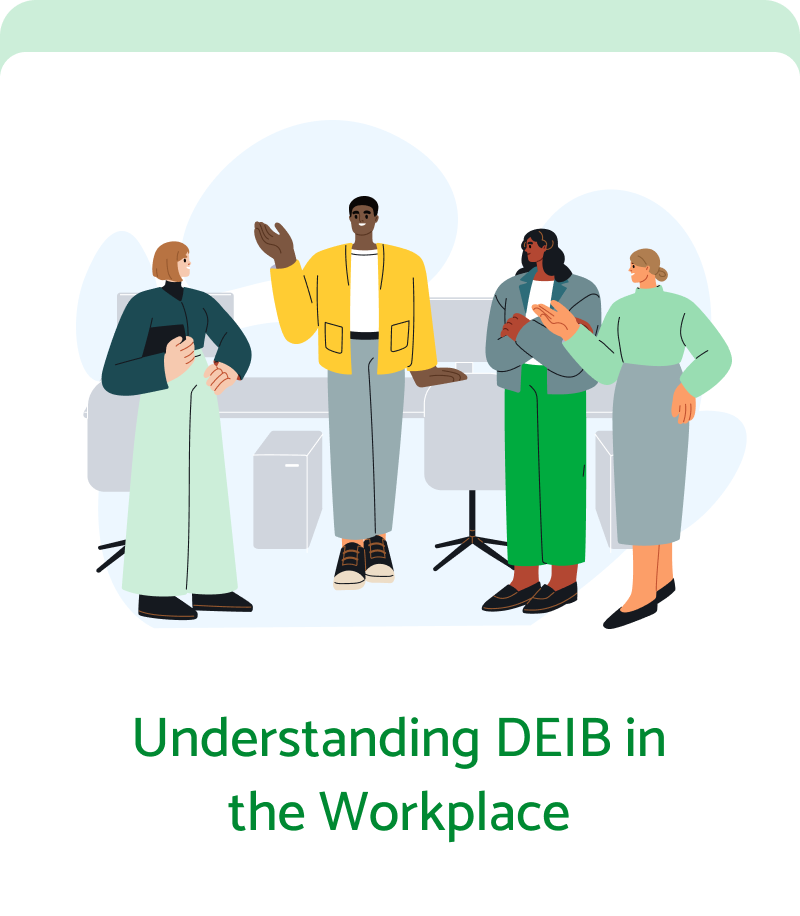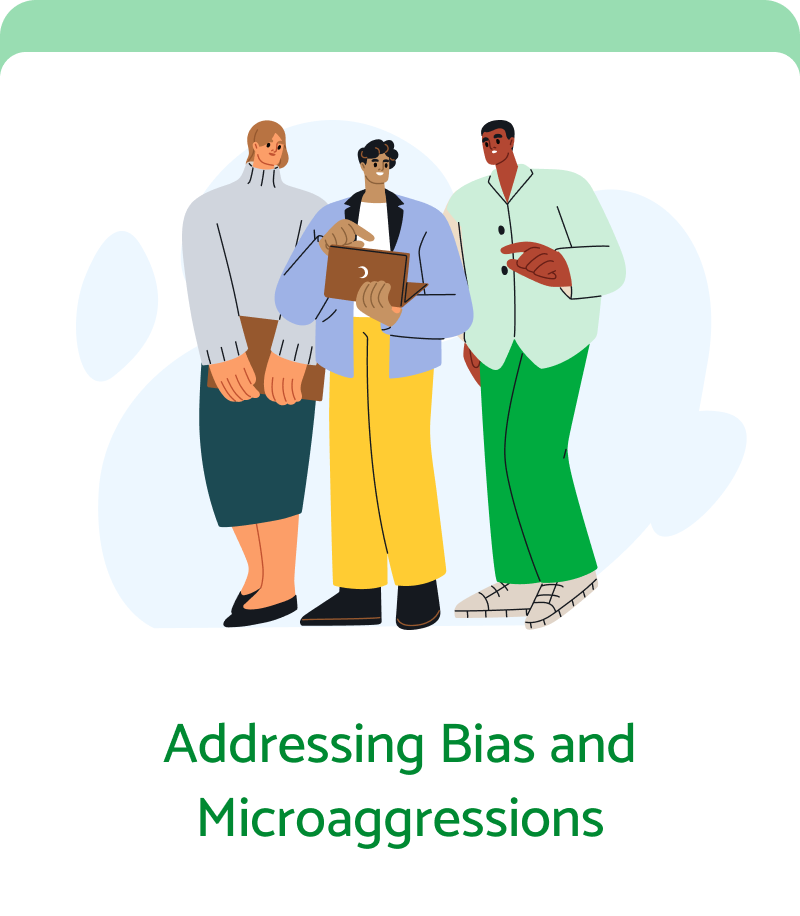DEI training, more recently referred to as DEIB (diversity, equity, inclusion and belonging) training has become a widely talked about and evolving part of employee training and development since it first appeared in the 1960s, after the civil rights movement.
Although DEI training can be mandatory or optional depending on individual state mandates and organizational factors like size and industry, many organizations do not have a plan, let alone a program that delineates how they will create a more diverse, equitable and inclusive organization.
Here, we explore the profound consequences this can have on the future growth and profitability of a company and how to counteract these negative consequences by unpacking the importance of having a robust DEIB training program for the modern workforce and how to execute on this critical part of an organizations L&D, culture, retention, and growth strategy.
We look at:
The importance of DEIB training in today’s job market
The benefits of DEIB training for organizations
Key areas to cover in your DEIB training program
How to build your DEIB program
Online learning for diversity, equity, inclusion and belonging training
What is DEIB Training?
Diversity, equity, inclusion and belonging (DEIB) training is designed to familiarize and train your employees in the way your company culture, policies and procedures address the representation of diverse groups of people in the workplace. It also teaches employees of all levels about important anti-discrimination laws and procedures. Some of these groups and protected classes include gender, race, ethnicity, age, religion, sexual orientation, and disabilities, among others.
To understand the context of the term DEIB we can look at what each word means on its own, and how it all comes together to create one of the pillars of any organization’s company culture and a strategy that must be developed if they hope to create a functional, diverse, and productive workplace.
Let’s explore these definitions as defined by the Oxford Dictionary:
- Diversity: The practice or quality of including or involving people from a range of different social and ethnic backgrounds and of different genders, sexual orientations, etc.
- Equity: The quality of being equal or fair; fairness, impartiality; even-handed dealing.
- Inclusion: The practice or policy of providing equal access to opportunities and resources for people who might otherwise be excluded or marginalized, such as those who have physical or intellectual disabilities and members of other minority groups.
Diversity works as the invitation for a large variety of people to be a part of the organization and represent its mission statement, core values and brand.
Equity alludes to the importance of making sure resources are given in an even fashion to all, regardless of which group(s) they may identify with or belong to.
Finally, inclusion rounds things out by touching on how employees should make systematic efforts to bring resources to those who don’t have access to them because of socioeconomic, gender, sexual identity and other factors that put them at a disadvantage.
But what about the recently added B? Well, think of belonging as the glue that brings the diversity, equity, and inclusion portions of your DEIB training program together.
Cambridge defines Belonging as: A feeling of being happy or comfortable as part of a particular group and having a good relationship with the other members of the group because they welcome you and accept you. Your DEI training program can’t have the impact it needs to have on your organization if employees don’t feel like they truly belong. Feeling a true sense of belonging will allow people to buy into your organization’s efforts around diversity, equity and inclusion and connect with members of leadership and other employees on how important these are to the organizations work-culture and growth.
The Importance of DEIB Training in Today’s Job Market
Just like employees are demanding career advancement opportunities like upskilling and reskilling training resources, they also want to work in a diverse environment where the free flow of different people and ideas is the status quo – a LinkedIn study backed this up by showing that 76% of employees and job seeker see diversity as important when considering job offers.
The prevalence of social media and advances in mobile technology have allowed employees and employers alike to see what excellent diversity and inclusion looks like and just as importantly, how organizations that aren’t willing to diversify their workforce and provide resources in an equitable manner often fail.
Ultimately, employees and job seekers have come to understand that we live in an interconnected world that requires us to share ideas, have conversations and do business with people with all kinds of ethnic backgrounds, personalities, skillsets, and educational and cultural backgrounds every day in order to thrive – and they want to work for an organ3ization that aligns their values, and business goals with these ideals of the future.
Benefits of DEIB Training Programs for Organizations
Increase In Employee Engagement and Retention
Workplace diversity training programs serve a crucial role in keeping your employees engaged with their work, teams, and organizational goals – these factors (among others) also tend to play a key role in determining whether an employee wants to stay with a company for the long run or not.
A study done by Catalyst showed that positive experiences with inclusion explained 49% of team problem-solving abilities, 35% of work engagement and 20% of intent to stay at the organization.
In a job market where employees aren’t willing to stay very long at an organization where they don’t feel engaged, providing comprehensive DEI training resources plays a vital role in bolstering your employees sense of belonging and making them feel engaged with their work, peers, and organizational efforts.
As we previously mentioned, this has the effect of increasing their commitment to staying with the company for the long run given that continuous DEI training will pair with other upskilling and reskilling initiatives perfectly to create an inclusive and forward moving workplace they want to come
Bolster Team Productivity
We can also see how DEI training benefits organizations by looking at how inclusive teams perform compared to less-diverse ones.
The Catalyst study also looked into how diversity impacts productivity within teams and found that teams that value and promote inclusivity are 35% more productive.
Creating diverse and inclusive teams allows organizations to get ahead of the rapid changes that happen across the world in different industries and be able to take a proactive, rather than reactive, approach to making the right adjustments to stay competitive.
As an example, we can look at the evolution of the way we use pronouns in the workplace. As little as 5 years ago, many organizations did not have standard practices, procedures, and rules in place for the correct use of pronouns for persons in the LGBTQIA+ community. Because of this, organizations with comprehensive DEIB training programs and diverse workforces have been able to educate their employees at large and make the necessary adjustments that foster a sense of belonging for this community like implementing pronouns within email signatures and messaging boards, promoting, and funding ERG’s (employee resource group) and more.
In turn, these teams open channels of communication and learn how to be properly inclusive of everyone’s ideas, leading to significant increases in the cohesiveness and productivity within the group.
Boost Business Performance and ROI
Questions around how building a DEI training program, beyond yearly compliance, can reflect as ROI and business performance are often asked by members of leadership, board of directors and the C-Suite. Although the productivity and retention boosting advantages of having a strong program ultimately have a positive effect on growth and revenue, there is more to the story.
TechTarget’s Enterprise Strategy Group (ESG) recent study on DEI found that organizations with mature DEIB training programs in place reported an average 11.7% gain in market share in the last 12 months, compared to 7.7% growth for companies with little program integration.
The study goes on to provide data on how organizations with mature DEIB programs also tend to beat their counterparts to market and even see greater increases in revue.
If we zoom out a bit from the specific data, we can see how significant the ROI and positive impact on business performance is when an organization invests resources into developing their corporate DEI training program. This sort of business impact data is a great tool that learning and development and HR teams should use to gain leadership buy-in for their programs and efforts around DEI given that it helps to make a solid case for why the organization should allocate resources to this type of training.
Key Areas to Cover in Your DEIB Training Program
Its critical that you include the right mix of topics in your DEI training program, given how extensive the subject can be. Training content that introduces employees to foundational concepts of DEIB is crucial in making sure they get a basic understanding of the “why DEIB in the workplace” they need to be able to dive deeper into the ‘how’ of creating an inclusive workplace later on.
Similarly, having lessons that teach employees how they can help create that culture of belonging your program is aiming to build is what will bring all of the conceptual knowledge together, and provide practical and actionable steps employees can take on a daily basis.
Here is a visual of what that looks like:



How to Build Your DEIB Training Program
Evaluate the State of DEIB in Your Organization
Before starting to implement any part of your new DEI program, or changes to an existing one, it’s key that you gather data on the current feelings and opinions employees in your organization have around diversity, equity, inclusion and belonging along with some demographic data.
You can gather this data by conducting open and anonymous surveys for all employees to give their honest take on the matter – without fear of repercussions against them or feeling embarrassed about voicing their opinions in public forums.
Use focus groups to gather more in-depth data about your organization’s current inclusivity landscape. Throughout this entire process, L&D and HR teams need to tailor the questions and procedures within the focus groups to extract information that is the most relevant to their specific organization and its demographic makeup.
Once you’ve collected and found trends within this data, you can start to define the objectives of your DEI training strategy and how it fits into your broader L&D program.
Define Program Goals and Objectives
Using the data collected in the first step you can create the short- and long-term goals you’re looking to achieve with your training program as well as the KPI’s you’ll need to track to measure progress.
Some examples of core DEI metrics and KPI’s you can use are:
- Employee lifecycle KPI’s
- Hiring
- Retention
- Advancement
- Employee experience KPI’s
- Engagement
- Employee resource group participation
- Accessibility to resources
It will be most beneficial for your organization to find the trends in your data and see what main areas of DEI the organization needs to prioritize to start moving towards becoming a more inclusive and productive workplace.
Expand Your Training Program Across All Levels
Including every member of the organization, no matter how tenured or new, is a staple of any well-rounded DEI training program.
Make sure to tailor the training for members of leadership and management so that they can gain the skills they need to help create and keep the inclusive spaces your program is trying to build throughout the entire organization.
DEI training for managers and all levels of leadership will also help to shape your organization’s leadership team into one that reflects the diversity of its employees and looks to add talented leaders from all backgrounds.
Provide DEI Online Training Resources
Among many other benefits, online training offers L&D teams the ability to make DIEB training an ongoing effort instead of a once-a-year occurrence. This is crucial as it will help to weave the workplace diversity training program into company culture and drive adoption of the program among employees.
Online training also gives employees the opportunity to continue to learn and engage with DEIB concepts and lessons outside of their assigned training. This flexibility is great for employees who may want to pursue management and leadership roles given that they will be able to learn how to harness the power of inclusivity and diversity to create high performing teams.
Market Your DEIB Training Program
Your DEIB program should be something you’re proud to tell your employees, job applicants and the world about.
Internally, you should market your DEI training program by posting about it on message boards (Slack, Teams, etc.) and sending out internal emails to create awareness. It’s important to be open and transparent about the goals and expectations the organization has for the program and leave the door open to feedback and questions.
One of the best ways to promote your new (or improved) DEIB program externally is to include it on your job postings and company website – as we’ve mentioned before, job seekers want to make sure your organization aligns with their values and inclusivity needs more than ever before and seeing that DEIB is a part of your organizational culture you’re willing to promote will certainly spark their interest.
Online Learning for Diversity, Equity, Inclusion & Belonging Training
Using online learning tools, like an LMS (learning management system), for DEIB offers L&D teams the opportunity to give their employees ultimate flexibility when it comes to their training. Employees can access video modules on any device, wherever it’s most convenient. This lowers the barrier of entry for employees by placing crucial training content at their fingertips – not just at the office.
Online training tools also allow employees to engage with broad and complex topics such as DEIB and learn through engaging on-demand microcontent that can provide them with examples and scenarios to prepare them for real life situations.
Finally, online learning tools allow HR and L&D teams to use the power of machine learning to create custom learning paths for different roles within the organization and track the progress of learners with real time reporting tools. This helps the collection of data and makes it much easier to pivot the programs’ focus and marketing efforts based on learner trends.
Closing Thoughts
DEIB training has become much more than box HR departments need to check every year or a nice-to-have training they offer their employees. As we’ve discussed, it is a critical part of an organization’s learning and development program because it seeps into key areas of organizational performance like employee retention, market share growth, profit and much more.
As the world around us continues to become more interconnected, and peoples’ abilities to connect with individuals from all kinds of educational backgrounds, ethnicities, sexual orientations, and gender identities becomes a skill directly tied to revenue growth, organizations must dedicate time and resources into creating the best DEI training programs for their people.

